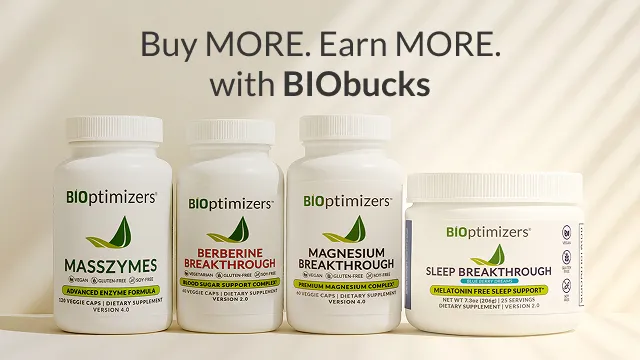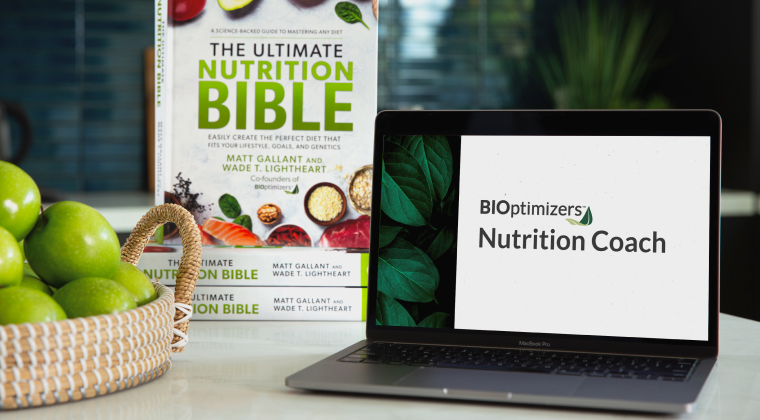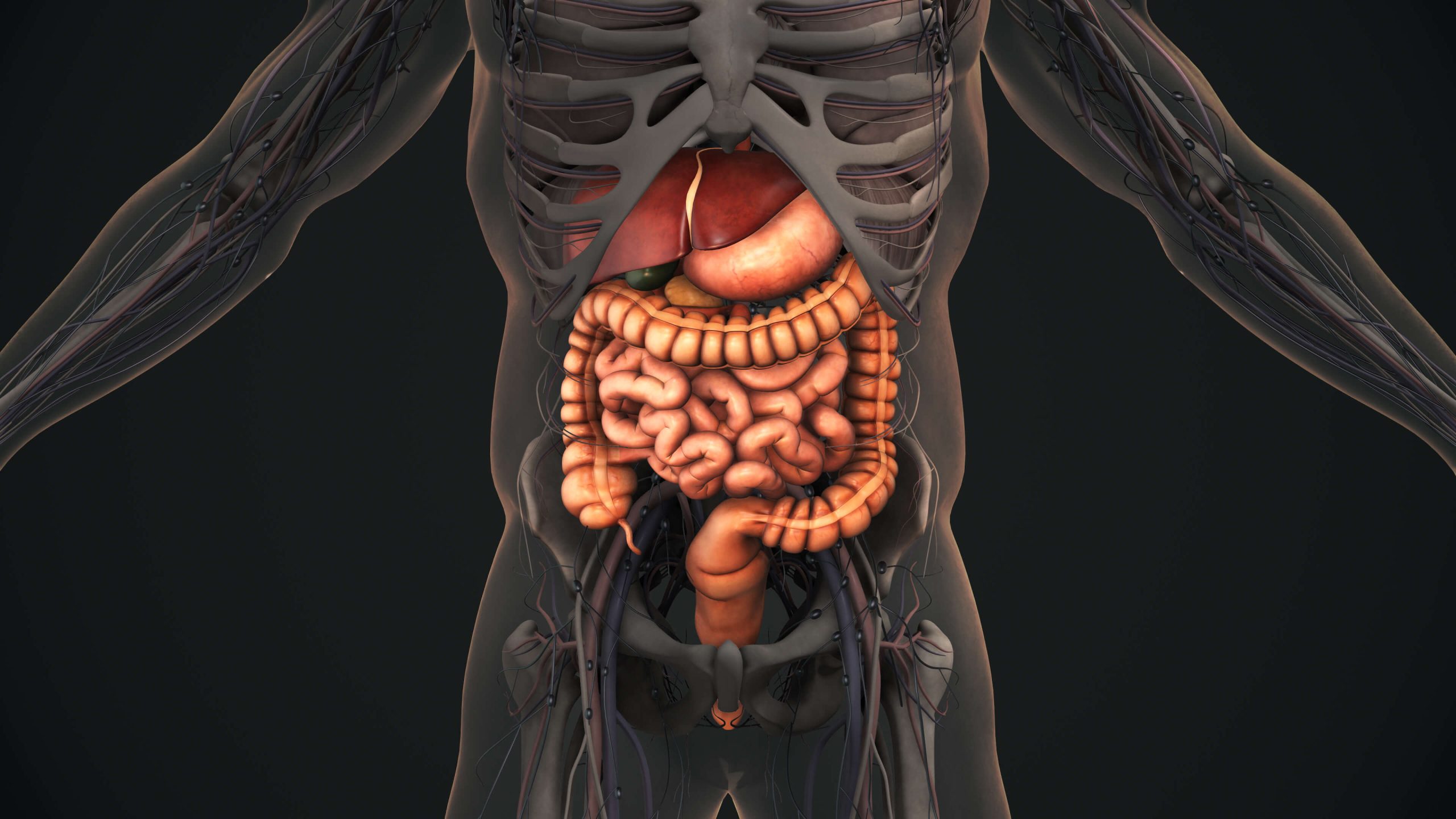
12 Signs You Have Suboptimal Digestion And How To Re-Optimize Your Gut
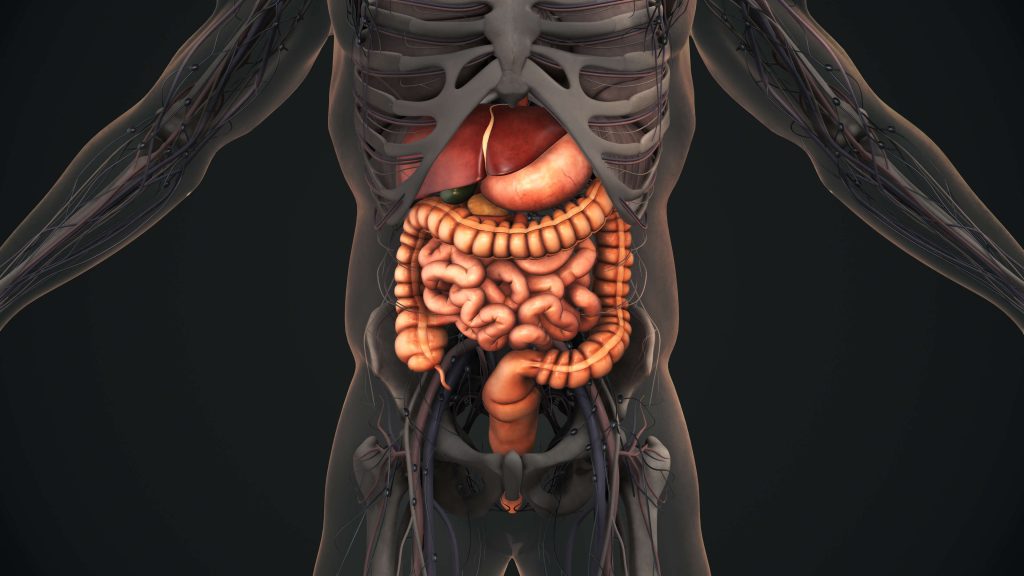

12 Signs You Have Suboptimal Digestion And How To Re-Optimize Your Gut
Here are some questions you can answer to help assess your digestive health:
- After a meal, do you feel bloated?
- Do you burp a lot?
- Do you fart a lot? Does it stink deep?
- How many bowel movements a day do you have? It should match the number of meals you have.
- Do you feel “full” for a long time after a meal?
- Does your stomach get upset easily?
- Do you ever get constipated?
- Do you ever get abdominal cramps?
- Are your stools poorly formed?
- Do you ever experience diarrhea?
- Do your stools have a pungent stench?
- Do you get tired after you eat?
These are the 12 signs of suboptimal digestion. If you answered “yes” to any of these questions, then you should find ways to boost digestion and re-optimizing your gut.
The 5 stages of digestion
There are 5 stages of digestion:
- Preparation
- Secretion
- Breakdown
- Absorption/nutrient absorption
- Elimination
Stage 1: Preparation
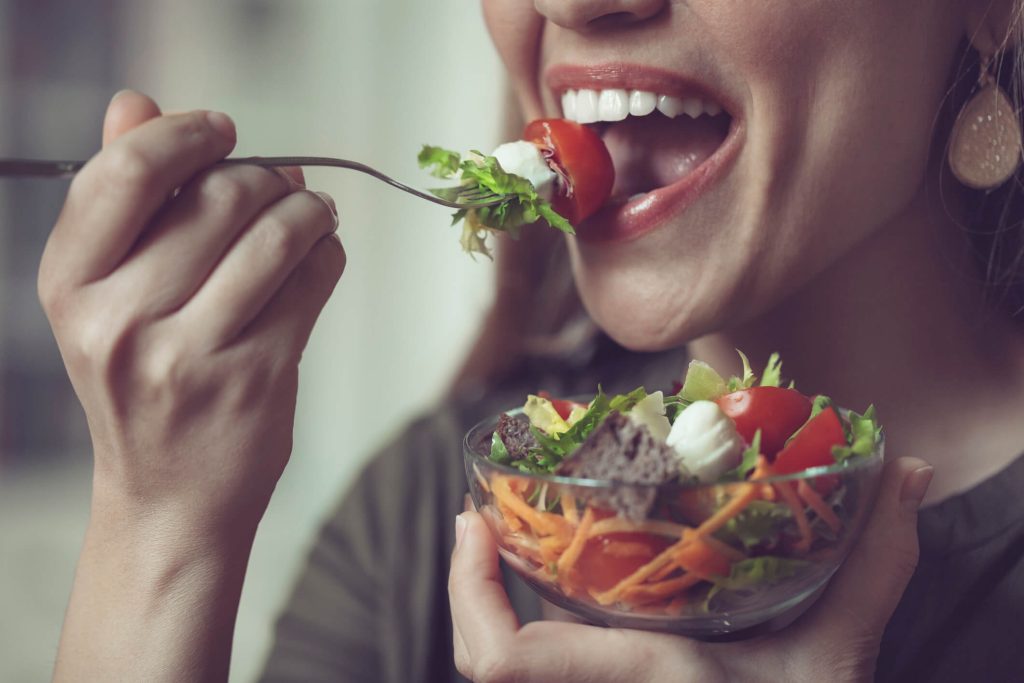
The first part of the digestive process begins in your mouth. Chewing tells your brain what kind of food you’re eating. Then, your body begins producing the right kind of enzymes for that food.
If it’s carbohydrates, the body will produce amylase in your saliva. If it’s protein, the submandibular glands located under your jawbone secrete protease to help with protein breakdown. If it’s fats, the sublingual glands (“under the tongue”) help produce lipase, which aids in fat digestion.
The optimal number of chews is between 25-50 chews. However, in today’s hyper-distracted world we have a chronic under-chewing epidemic. We strongly advise mindfully eating your food and turning off the distractions.
Stage 2: Secretion
As food enters your stomach through a muscular ring, gastric acid (known as HCL or hydrochloric acid) and enzyme secretion become activated. The muscular ring between the stomach and the esophagus opens and closes in order to keep acid from coming up into your esophagus.
What Is The Function Of Hydrochloric Acid?
Hydrochloric acid helps to break down, digest, and absorb nutrients such as protein. It also eliminates bacteria, parasites, and viruses in the stomach, protecting your body from infection.
Powermove: Take The Right Enzymes For Each Meal

One of the ways to optimize your digestion is to consume the right enzymes for the meal that you’re eating. The best digestive enzymes will survive the stomach acids and start breaking down food into utilizable nutrients.
Dr. Wright explains:
“Slowly but surely, his gray skin color returned to normal, healthy-looking brown and pink skin tones. His fatigue dissipated, too, replaced by increasing energy. His wife also noted an improvement in his mood and attitude. Six months later, he declared himself back to normal.”
So what is betaine HCL? Betaine hydrochloride is an acidic form of betaine, a vitamin-like substance found in grains and other foods.
Those who consume animal protein need additional hydrochloric acid. That’s why we suggest consuming HCL Breakthrough with each meal.
Protein is the only nutrient that needs to be prepared by hydrochloric acid before your stomach’s naturally occurring enzymes can work properly.
Here’s A Quick Self-Test For Low HCl/ Hypochlorhydria
You can determine if you need HCL by a simple home test, called the bicarb test.
Instructions:
Mix 1/4 teaspoon of bicarbonate of soda (baking soda) in water (about 6 ounces) and drink on an empty stomach first thing in the morning. If you have sufficient levels of stomach acid, the bicarbonate will be converted into carbon dioxide gas, causing belching within less than 5 minutes. If there is no belching within 5 minutes, stop timing.
Early and repeated belches might be due to excessive stomach acid. But they could also be due to swallowing air when drinking the solution (this sort of belching tends to be smaller belches). If ‘normal’ belching doesn’t occur until after 3 minutes, stomach acid is low.
To recap:
Low stomach acid → no belching
Sufficient stomach acid → belching
The 3rd digestive substance your body produces is bile. Bile is critical for breaking down fats. It also helps us absorb fat-soluble vitamins like A, D, E, and K.
Bile is a greenish-brown fluid that helps digest fats from our food intake. It is produced by the liver and stored and concentrated in the gallbladder until it is needed to help digest foods. When food enters the small intestine, bile travels through the common bile duct to reach the duodenum (small intestine).
One of the natural herbs you can take to stimulate bile production is dandelion roots. It is present in our product kApex®.
Stage 3: Breakdown
Next is when we deconstruct the food into its raw elements. We break down fats into fatty acids, proteins into amino acids, and carbohydrates into glycogen.
This is where enzymes do their magic. According to Dr. Howell, the enzyme pool of an individual determines how well they’re able to break down and absorb the nutrients they’re consuming.
Cooking Kills Enzymes

Cooking deactivates a lot of the enzymes present in the food that would normally assist with digestion.
Remember all the food that’s cooked, pasteurized, or processed with heat does not possess any enzymes. That’s why we always suggest taking a few capsules of enzymes and probiotics with every meal.
With age, our enzyme reserves depreciate. We absorb fewer and fewer nutrients. This leads to other problems. It’s a vicious cycle.
How To Select The Best Digestive Enzymes
With enzymes, we’re looking specifically for a full-spectrum enzyme formula with high protease levels. They should also work at all pH ranges of the intestinal tract. This is because different nutrients are assimilated at different pH levels.
That’s why we created a tri-phase protease formulation. The later contains three different proteases in our medical-grade enzyme formula: MassZymes. These proteases work at various pHs to get maximum assimilation of amino acids.
You also want an enzymatic, stable, utilizable, and based on a plant-based formulation instead of animal-based. Animal-based enzymes tend to be less consistent in strength and function.
Also, it’s good to have a multipurpose enzyme formula that contains enzymes such as lactase, amylase, lipase, and other enzymes. Each enzyme breaks down specific macronutrients.
We suggest taking 2-5 capsules of a high-quality enzyme formulation with every meal. Eating flesh protein such as fish or meat is especially good for maximizing amino acid absorption.
Stage 4: Absorption/Nutrient Absorption
Your digestive system is a tube up to 30 feet long from your mouth to your anus. These valuable nutrients you’re consuming have zero benefits for you unless they pass from that tube into your bloodstream. That’s what the absorption stage is all about.
As food enters the small intestine, the process shifts to absorption, where your microbiome plays a critical role. Friendly microbes in your gut can actually further stimulate enzymes to help break down any food that wasn’t fully processed earlier.
This is why consuming foods high in probiotics can aid digestion.
Here are some foods rich in probiotics:
- Real yogurt: Most commercial yogurts are filled with dead probiotics and an overload of sugar. Real yogurt tastes incredibly sour because the live probiotics have consumed the sugar and produced beneficial acids.
- Kefir: It provides a good dose of calcium and healthy bacteria. Try to choose unflavored kefir, or the added sugar may help prevent the healthy bacteria from thriving inside the body.
- Sauerkraut: The primary bacteria in this food type is Lactobacillus, which is found in concentrations even higher than that of yogurt. You should prepare sauerkraut yourself rather than purchasing a store variety.
- Tempeh: Tempeh provides a good dose of protein and is an excellent way to boost your intake of probiotics. It’s a great source of calcium too.
- Kimchi: Kimchi is prepared using cabbage, radishes, and scallions and may also contain red pepper or salted shrimp. The probiotic strain found in kimchi is called Lactobacillus Brevis.
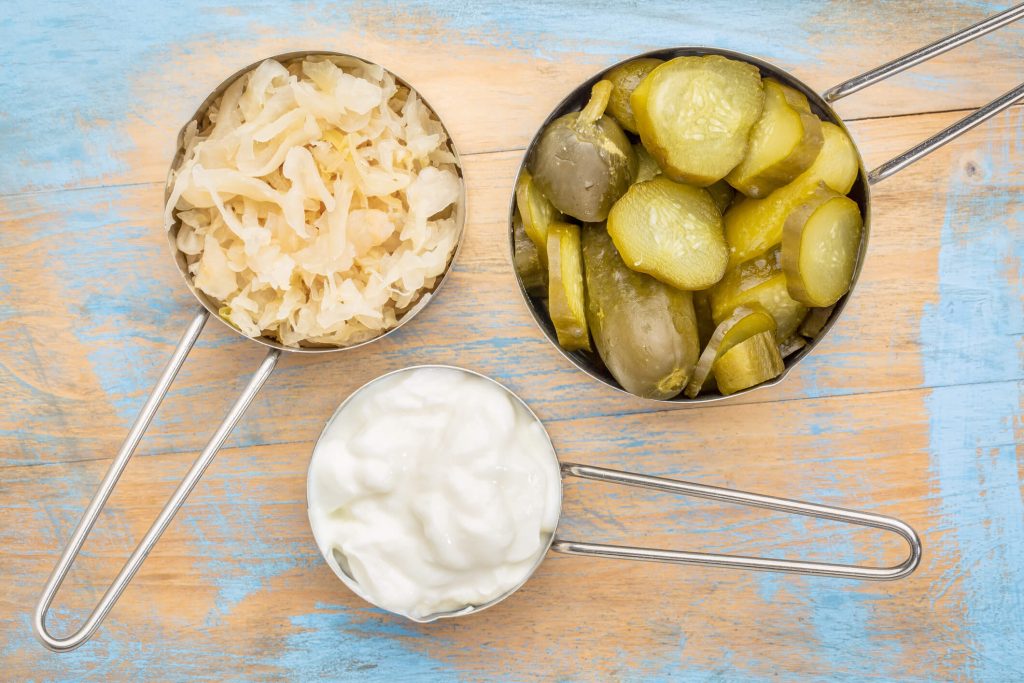
- Miso: Miso soup is made from fermented soybeans, salt, and koji, an edible fungus. Taking miso helps to:
- Boost your digestive system
- And enhance your immune system
- Kombucha: Kombucha is one of the fermented probiotic drinks that is made with black or green tea along with yeast that helps to ferment it.
- Pickles: Pickles are usually best made at home by fermentation the desired vegetables, such as cucumbers, salt, and water.
- Natto: A Japanese dish and one of the natural probiotics that are basically made from fermented soybeans. This dish is very rich in vitamin K. 5
- Raw fruits and vegetables are a great source of natural probiotics and have a diverse range of live bacteria.
Good bacteria help in nutrient absorption — from macronutrients like protein and fats to micronutrients.
According to studies, it is good to have a diet with high levels of
- Prebiotics (a type of dietary fiber that is helpful for the healthy bacteria in the gut)
- Probiotics
- Synbiotics (food that combines probiotics and prebiotics)
Such a diet helps increase:
- Mineral absorption
- Bone mineral content
- Bone structure
We also recommend taking probiotics with your meal to aid maximum digestion. The role of probiotics is not only to colonize the gut but also to assist in the digestion and absorption process. Their other role is to “clean house” and help eliminate bad bacteria.
The best action plan is to eat a variety of foods, especially vegetables, for microbial diversity and combine that with probiotics supplements.
Stage 5: Elimination
Whatever’s left at this point enters the colon. Most of the water will be reabsorbed by the body. This is one of the reasons why consuming water-rich fruits and veggies can help digestion.
Probiotics continue to play a role in the colon–they digest whatever is left from your digestion process. Peristaltic movements continue to help move the semi-solid waste through the colon.
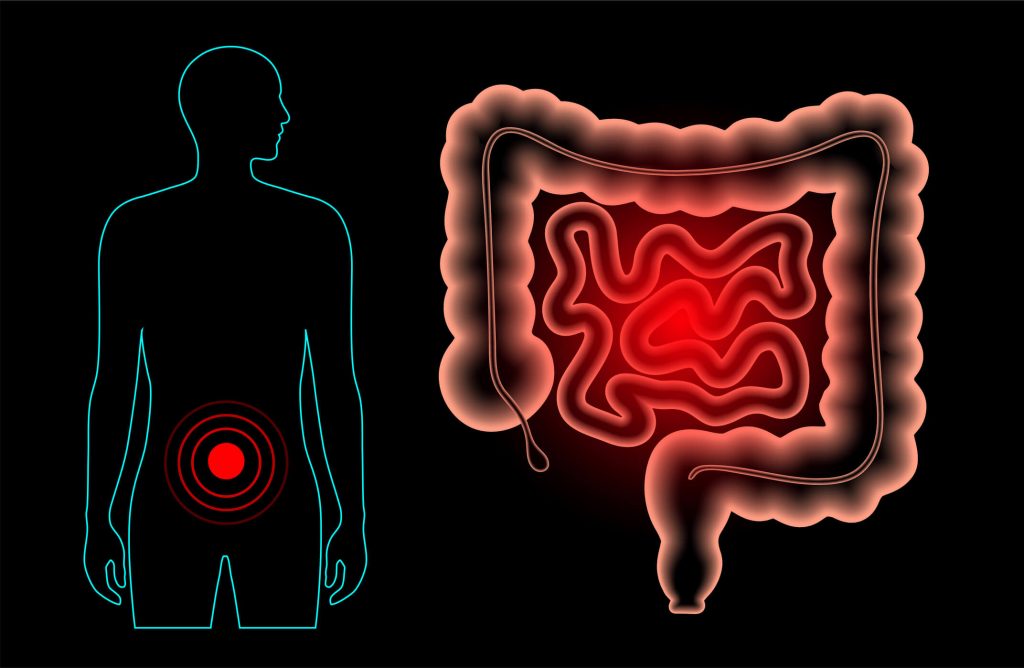
At this stage, your rectum expands in response to the storage of fecal matter. Using peristaltic movements of the rectum, waste is ultimately eliminated through the anus, completing the digestive process.
The success of this process often has a lot to do with the stages before it. Otherwise, undigested food will make it to the colon without adequate enzymes, hydrochloric acid, and digestion-enhancing probiotics.
References
- Accarino AM, Azpiroz F, Malagelada JR. Attention and distraction: effects on gut perception. Gastroenterology. 1997;113(2):415-422. doi:10.1053/gast.1997.v113.pm9247458
- Mason AE, Epel ES, Kristeller J, et al. Effects of a mindfulness-based intervention on mindful eating, sweets consumption, and fasting glucose levels in obese adults: data from the SHINE randomized controlled trial. J Behav Med. 2016;39(2):201-213. doi:10.1007/s10865-015-9692-8
- Clemente JC, Ursell LK, Parfrey LW, Knight R. The impact of the gut microbiota on human health: an integrative view. Cell. 2012;148(6):1258-1270. doi:10.1016/j.cell.2012.01.035
- Brown AC, Valiere A. Probiotics and medical nutrition therapy. Nutr Clin Care. 2004;7(2):56-68.

